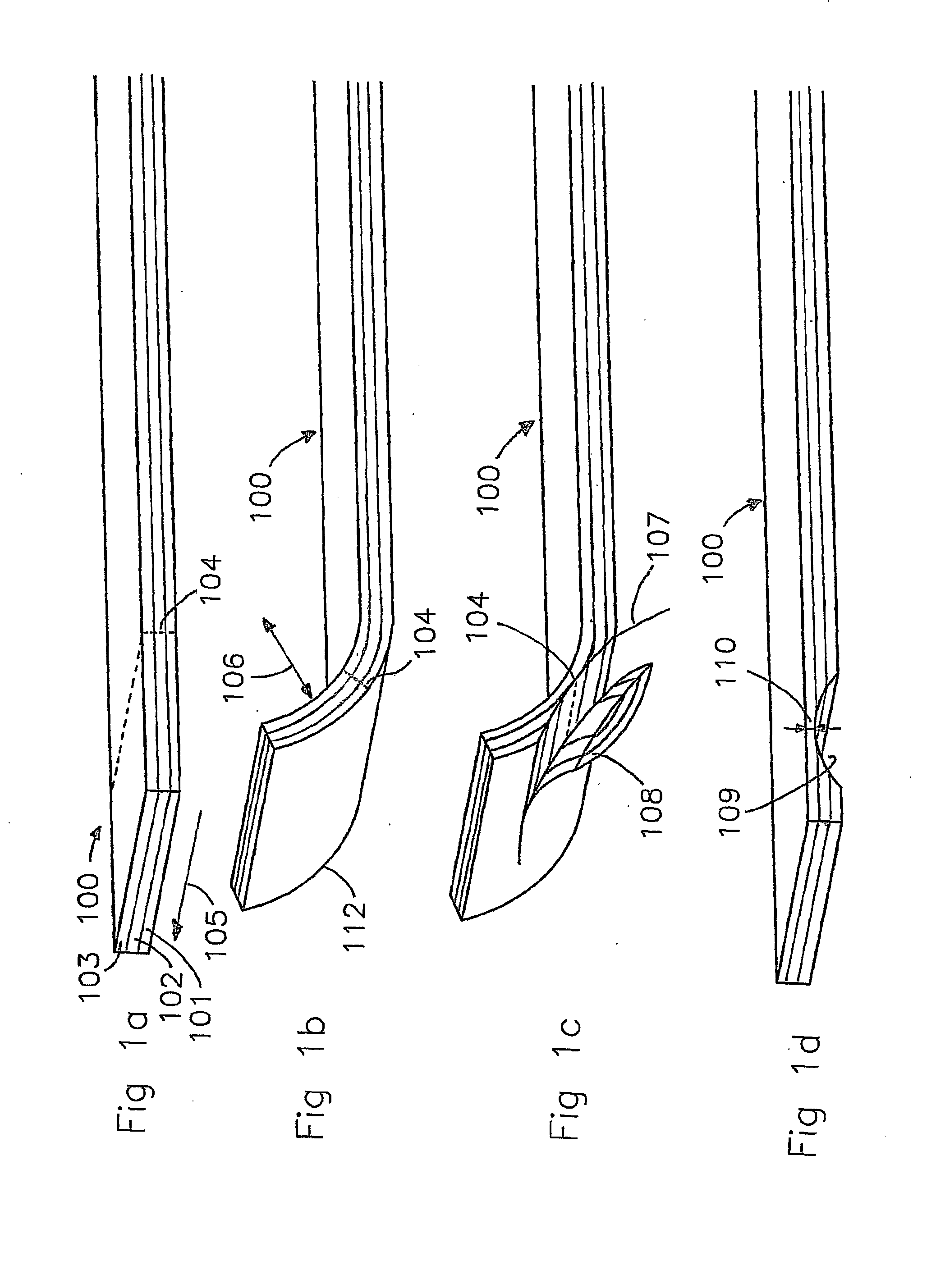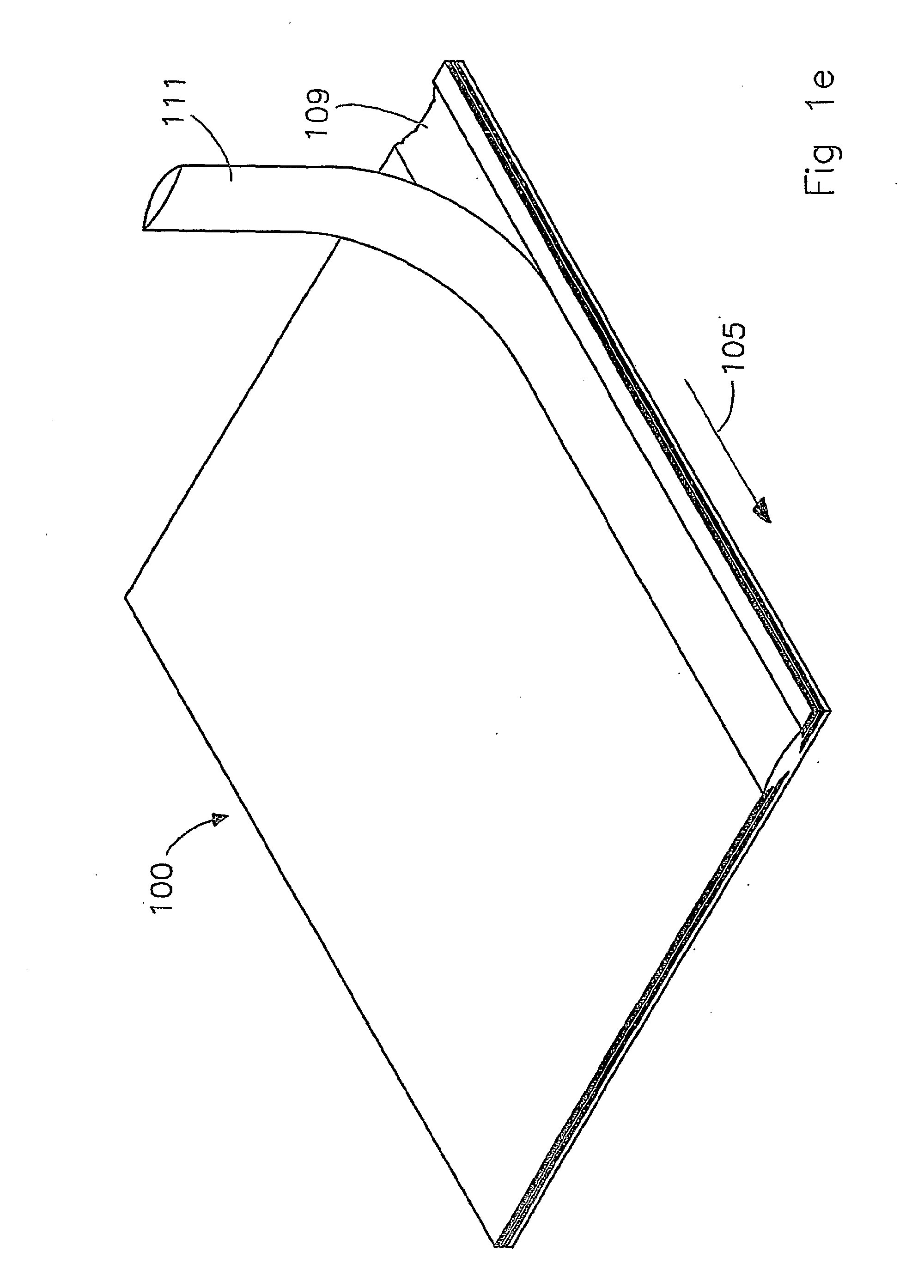Method and Device for Producing a Groove Near an Intended Edge Part of a Conveyor Belt, Which Groove is Intended to be Filled with a Filler Having Sealing Properties
- Summary
- Abstract
- Description
- Claims
- Application Information
AI Technical Summary
Benefits of technology
Problems solved by technology
Method used
Image
Examples
Embodiment Construction
[0028]FIG. 1a only shows a strip of a conveyor belt 100, which is composed of a base layer 101, a reinforcing layer 102 and a coating layer 103 and having an intended edge part 104. The conveyor belt has a substantially flat shape, and extends lengthwise in the direction indicated by arrow 105. In particular, the strip forms part of a conveyor belt, more in particular of a conveyor belt which has been made endless.
[0029]FIG. 1b shows the conveyor belt 100 from FIG. 1a, in which a curvature 112 with a radius 106 is provided at the position of the intended edge part 104. The curvature 112 is provided in a plane substantially at right angles to the longitudinal direction of the groove to be formed. The longitudinal direction of the groove to be formed in this case extends in the longitudinal direction 105 of the conveyor belt 100. The curvature 112 in this case as it were extends around the axial direction of the groove to be formed, i.e. around the longitudinal direction 105 indicated...
PUM
| Property | Measurement | Unit |
|---|---|---|
| Radius | aaaaa | aaaaa |
| Radius | aaaaa | aaaaa |
| Thickness | aaaaa | aaaaa |
Abstract
Description
Claims
Application Information
 Login to View More
Login to View More - R&D
- Intellectual Property
- Life Sciences
- Materials
- Tech Scout
- Unparalleled Data Quality
- Higher Quality Content
- 60% Fewer Hallucinations
Browse by: Latest US Patents, China's latest patents, Technical Efficacy Thesaurus, Application Domain, Technology Topic, Popular Technical Reports.
© 2025 PatSnap. All rights reserved.Legal|Privacy policy|Modern Slavery Act Transparency Statement|Sitemap|About US| Contact US: help@patsnap.com



